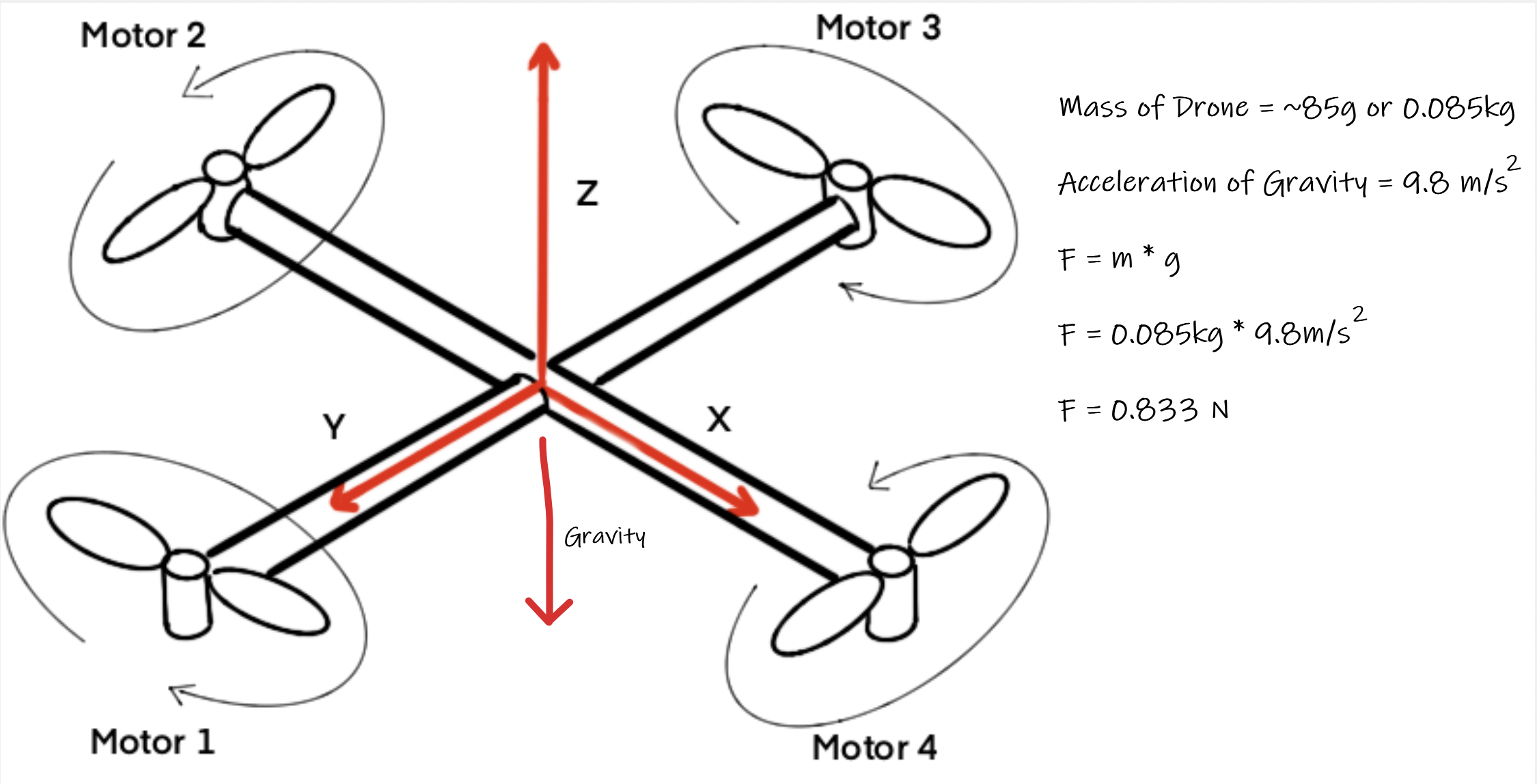↕️ Achieving Vertical Motion!
The most crucial aspect of drone flight is likely vertical motion. After all, it is how our drones take to the skies!
What steps are taken to achieve vertical motion?
Let's investigate!
First, let's talk about how things fall. Gravity is the force that holds things down on Earth. All things on our planet are always affected by this force. This means that if we want to fly, we need to find a way to beat this force and keep beating it.
Depending on how heavy something is, gravity pulls on it in a different way. We can use a simple equation to figure out how strong this force is:
F = m * g
With this equation, you can find out how much gravity is pulling on something. In this equation, F stands for force, m for the object's mass in kilograms, and g for the acceleration of gravity.
Gravity's acceleration can be different in different parts of our solar system, but on Earth, we use a rough estimate of 9.8 m/s².
So, let's see how this equation works in real life. The Tello drone we use at Betabox weighs about 85g. In our equation to find the force of gravity acting on the drone, we have to use kilograms so we need to convert. This would mean that we would solve the following expression to find the force of gravity on this object:
F = 0.085kg*9.8 m/s²
 This means that the object would be subject to a force of 0.833 kg*m/s.
This means that the object would be subject to a force of 0.833 kg*m/s.
You may have noticed that our calculation is followed by an ugly unit. This is a combination of all the units we used when we did our math. This force can be simplified down to 0.833 N. In this case, the N stands for Newtons, which is the unit for measuring force.
Overcoming Gravity!
Now that we know how to figure out the force of gravity, we can talk about why it matters for how our drones move up and down.
If our drone can't fight against the force of gravity, it won't be able to fly. This means that the propellers on our drones need to generate enough lift to beat gravity. In our last example, this would mean that we would need more than 0.833 N to take off. In reality, we'd need at least 25–50% more force to get off the ground. Once we're in the air, we can turn that force back down until it's just a little bit higher than gravity. This will let us stay in one place.
What about going down? To go down, we would start to reduce the amount of force we put out, letting gravity pull us down. When we get to the height we want, we'll add force to get back to a hover.
Let's recap!
For takeoff and climbing, you need to use more force than the force of gravity.
To hover, you need to put out about the same amount of force as gravity.
When you land or go down, you have to use less force than the force of gravity.
